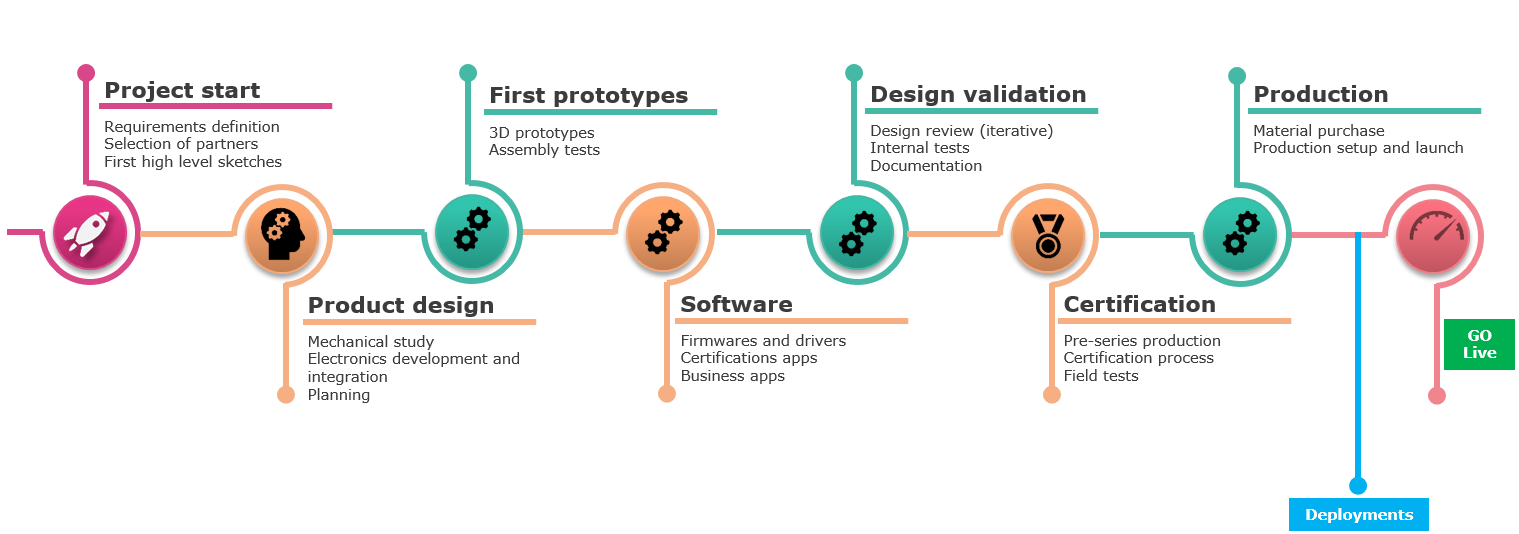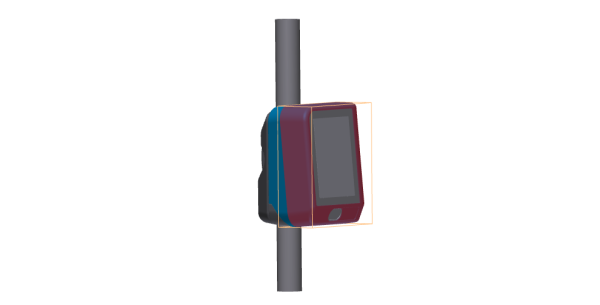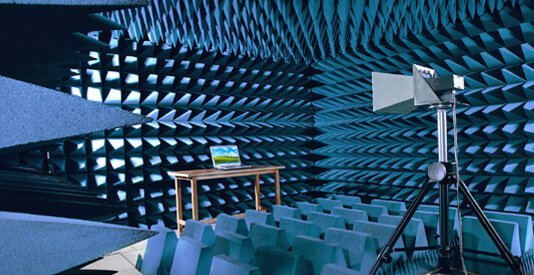Bringing invisible payments on board
Abstract
In Transport, more than anywhere else, payments (Open Payments ) should happen in the blink of an eye. That is the “just tap and ride” promise. But fast should not mean any old how. All safety and performance requirements should be met as well as a proper user experience and not to forget, the revenue protection guarantee for the transport operators and transit authorities.
One key element in this transit-payment ecosystem is the validator which covers the interaction with the traveller and the capture of payment transactions (taps) regardless of the media used (bank card, smartphone or other EMV enabled device).
For travelers, the validator is the first showcase of the Open payment service and the reason for which they would either adopt it or avoid it. For the industry and Transit operators, the validator bares their brand image. It is one of the key assets for the success of the service.

WL Tap 2 Use is Worldline’s Open Payment offering. It is an end to end solution to manage access and payment processes for public transportation and mobility services for cities. The solution includes the Open Payment validator, Account-based transit backoffice, payment gateway and acquiring services. More details can be found here .
The WL Tap 2 Use solution is continuously enhanced in order to better serve our customers’ needs. As part of this strategy, we decided to create a new version of our Open Payment validator: the YOVAL. A best-in-class Open payment validator at the crossroad of two worlds: Payments, our DNA and Transportation, one of our key markets.
In this article, I’ll share with you the specificities of such product and take you through the main phases of the creation process of an Open Payment Validator as well as some of the main takeaways.
Product design
As any hardware creation, building an Open Payment Validator is a complex, challenging yet exciting adventure. Once investments are approved, several phases are needed in order to convert a list of requirements and initial shape sketches into a final product which is operational, certified and ready to be massively produced and deployed.
Making a long story short, these steps often cover mechanical and electronic design, software developments and integrations, prototyping, testing, certifying in accredited laboratories, producing and not to forget the marketing and branding activities.
Below is a typical plan description for such a project:

Requirements collection
As a first step, the definition of an initial set of requirements for the new Open Payment Validator product is the most important part.
These requirements need to recognize all potential constraints.

Each stakeholder has specific expectations that need to be taken into account:
- End users: user friendly device (sound, display, interaction) for a fast and convenient use and a rich user experience;
- Transport operators: small-sized device, easy to swap in case maintenance is needed, robust and permanently connected to the central system so that it’s continuously monitored ;
- Transport authorities: fully secured EMV payment device increasing the trust in the system, which drives up adoption ;
- Validator manufacturer: find the right balance between customer demands and what is suitable for a generic product vision at a competitive price
Moreover, the Open Payment Validator needs to be suitable for installation in several types of locations:
- On board of buses and trams;
- On the platforms on a stand-alone poles;
- On the gates for stations (turnstiles) and parking entrances (Park & Ride);
- On the wall for lifts.
Additionally, for us, integrating the Worldline YONEO reader in this new validator was key in order to lift and shift the Open Payment solution already developed and certified. The validator would benefit therefore, by design, from all the payment applications and certifications as well as the Worldline terminal remote management and, most importantly, all the expertise and experience already gained through the previous deployments of the WL Tap 2 Use solution.
Housing and mechanical parts
The housing is the envelope of the validator. It gives the validator its aesthetical shape but has also important roles in the overall mechanical behavior. It ensures:
- The validator’s resistance to shocks, vibration and vandalism (example : IK grade);
- The correct sealing (IP grade), preventing damages due to humidity or dust penetration that may cause failures;
- Fire-safety in order to minimize the occurrence of a fire and prevent the spread of smoke and flames;
- Good transmission for embedded radio modules (4G, NFC…);
- Convenient installation supporting several configurations (horizontal and vertical pole, wall, turnstile…) and small size to be fitted easily;
- Easiness to maintain providing an easy-mounting / un-mounting system.

Electronics and software integration
The electronics (PCBs i.e. Printed Circuit Boards) are the brain of the Validator. They enable the secure reading and processing of the EMV cards through the EMV L1, L2 and PCI-PTS certified reader while providing a rich user experience (screen display, validation sound, lights blinking etc…).

Thanks to the embedded 4G and Ethernet connections, the validator can be permanently connected to the central system which is a key feature to move most of the business logic complexity (fare calculation) and payment processing from the validator to the back-office.
Electronics are also in charge of connecting to external devices like fleet management systems or metro gates as well as bringing the necessary electrical protections to the validator (automotive/railway compliant power supply, filters etc.)
Once the electronics are finalized, the software development phase starts, namely:
- Firmware development for the electronic boards;
- Drivers needed to integrate the electronic modules (NFC reader, 4G, GPS, QR Code reader, internal memory, etc.);
- Test applications needed for certification processes;
- Payment applications with the required PCI security;
- Functional applications implementing transit business rules.
3D prototyping
Throughout each one of the processes described above, 3D prototypes of the pieces (housings, metal parts, electronic boards, seals etc.) are printed in order to validate dimensions, usability, robustness and assembly processes (i.e. parts fitting in one another). In fact, virtual 3D designing on a computer is not enough. Physical validation needs to be performed to confirm the designs. A difference of less than 1mm can jeopardize the entire assembly.

Internal testing
In preparation for the certification phase, and before the launch of the pre-series production, internal tests need to be conducted in order to validate the design of the new device.
Some aspects like EMC are intangible phenomenon. Therefore it is difficult for manufacturers to know if their products are electromagnetically compatible. The only real way to find out is to conduct physical tests.
A failure can easily delay the time to market by few days and up to several months. It’s therefore very important to prepare properly and perform validations at each step.
The earliest the failure is detected, the easiest it is to solve it. In fact, once the devices produced or even installed, recalling or withdrawing them from the market is a very costly and complicated process. There have been some examples of that in the news over the past years (Toyota, Audi, Boeing etc…).
Pre-production
The pre-production phase aims to prepare and verify the setups of the production process, but also to produce pre-production devices that are used for final validations as well as the certification process (c.f. below).
At this stage the design is considered as validated and only minor adjustments are foreseen.
Molds are created in order to be able to inject the plastic pieces (housings, seals etc…) and first injections are performed. Also production chain is configured for the assembly of electronic components on PCBs.
Field tests
Field tests are important in order to validate that the device created integrates properly in the target ecosystem. Wiring and fixing aspects are checked as well as connection with other systems (gates for metro stations, parking barriers, etc.)
They are also a good dry run for the installer to adjust installation procedures for the full roll-out phases.

Certification process
For any device to be put in the market, depending on the type of device, the geography and intended use, different standards and regulations apply to ensure that user’s safety is not put at any risk but also that the needed performances are met.
The application of some of these standards is voluntary (even though it’s a recognized method to prove the conformity of the product to the related safety / performance requirement). However, other standards are mandatory according to European or national regulations. These regulations often require the provision of technical documentation and testing evidence before placing the device in the market.
In Transportation, for products intended for the European market, there are different standards that shall be met, some as part of the CE marking, and others that are specific to the automotive and railway regulations.
Below is a short description of the most common standards required for ticketing validators. However, this is not an exhaustive list. Also this article does not detail the software and payment certifications (EMV, PCI, etc.).
CE Marking
The CE mark indicates that the product is compliant to all the relevant EU directives and / or EU regulations that require a CE marking process The European legislation, currently enforced, requires from manufacturers to provide compliance evidence through testing and documentation.

Should a case come to court, the manufacturers must maintain the product technical documentation and tests records in order to prove that they have taken “all reasonable precautions and due diligence”; i.e. have checked the product, undertaken tests and made a concerted effort not to inadvertently put at risk the safety and health of the users or contaminate the environment.
The ticketing validators need to be CE marked according to the RED directive 2014/53/EU.
The radio equipment directive 2014/53/EU (RED) establishes a regulatory framework for placing radio equipment on the market. It ensures a single market for radio equipment by setting essential requirements for safety and health, electromagnetic compatibility, and the efficient use of the radio spectrum.
Radio Frequencies spectrum
The radio tests aim at ensuring the efficient use of the radio spectrum and that the device causes no perturbation of other nearby electronic devices.
These tests are based on standards like ETSI EN 301 908-1 and ETSI EN 300 330. They measure:
- Out of band emissions, spurious;
- Sensitivity, blocking, saturation.
For these tests as well as EMC ones, special equipment is needed like Faraday cages, antennae, climatic chambers etc.

EMC
EMC (ElectroMagnetic Compatibility) testing ensures that the electronic or electrical device doesn’t emit a large amount of electromagnetic interference (known as radiated and conducted emissions) and that the device continues to function as intended in the presence of several electromagnetic phenomena (Immunity).
Regulatory bodies around the world have placed limits on the levels of emissions that electronic and electrical products can generate. In our case, the railways and automotive regulations have to be taken into account in addition to the general level requirements (EN 50155, ECE R10 among others).
Tests cover the following aspects:
- Emission measurements: radiated disturbances, conducted disturbances, flickers, and harmonics.
- Immunity tests: radiated fields, surge immunity tests, fast transient bursts, induced fields, electrostatic discharges, voltage dips and short interruptions.
Safety
Product safety is the ability of a product to be safe for its intended use, as determined when evaluated against a set of established rules.
The standards set out test and documentary requirements that manufacturers and distributors placing equipment on the European market, must follow to demonstrate that their products meet defined safety criteria and are safe for their intended use.
The ticketing validators fall under the EN 62368-1 standard which is based on the principles of Hazard Based Safety Engineering (HBSE). This harmonized standard aims at verifying that the device has all needed protections (safeguards) in order to prevent users and service personnel from injury caused by:
- Electric Shock;
- Fire (and fumes);
- Physical Injury (sharp edges, falling/flying objects etc.);
- Chemical Hazards;
- Radiation.

Health
Public concern about the possibility of health risks resulting from exposure to electromagnetic fields (EMFs) emitted from various wireless devices and their infrastructure continues to be an issue all over the world. It is essential that the public is not exposed to dangerous levels of electromagnetic radiation, and thus EMF measurements are performed to ensure a device’s compliance to international guidance (e.g. of standard : EN-62311).
RoHS and REACH
RoHS (Restriction of Hazardous Substances) bans certain chemicals in finished electronic components (such as printed circuit boards and cables). It’s applicable to any product commercialized in the EU market.
REACH (Registration, Evaluation, Authorization and Restriction of Chemicals) requires manufacturers to register certain restricted chemicals they produce, import, or use. It applies as well to companies making products, importing into the EU or using certain restricted chemicals in electronic components.
The goal of these regulations is to improve the protection of human health and the environment from the risks that can be posed by certain chemicals or substances throughout the product lifecycle. RoHS and REACH compliance requires that the covered chemicals or substances do not exceed the authorized levels.
Mechanical and environmental testing
Installing devices inside public transport vehicles and stations brings specific constraints and extreme conditions that an electronic device needs to withstand such as vibrations, shocks, temperature rise, humidity etc…
Ticketing validators need to be tested for these extreme conditions. Some examples in the pictures below (from left to right):
- Random vibrations tests during several hours with defined levels,
- Ingress Protection (IP Code): sealing against water, dust etc.,
- Impact Protection (IK Code): resistance to impacts on each face of the device,
- Placed in a high temperature chamber for several hours.

Fire safety
All materials used in vehicles must achieve the highest level of safety possible in the event of a fire.
In addition to the individual compliances of each material used in the device to the relevant standards (like UL grades), the ticketing validators need to be compliant for the EN 45545 standard: European railway standard for fire safety (this is mandatory when being installed in a railway vehicle).
This standard specifies the performance requirements for reaction to fire of materials and products. It is based on hazard levels that are defined by the operation and design categories of the railway vehicles. Three hazard levels are defined: HL1, HL2 and HL3 with HL1 being the lowest requirement and HL3 being the highest.

For each hazard level, test methods, test conditions and reaction to fire performance Requirements (R1 to R26) are specified depending on the type of material and grouping rules.
The following tests are used to measure how the product compares to the standard requirements:
- T01 Oxygen Index;
- T10.03 Smoke density;
- T12 Smoke toxicity.
I spare you the picture of the test specimen, once it is burned :)

Last but not least
With the rising success of account-based systems and contactless payments in Transport, Open payment validators became one of the cornerstones of the new generation ticketing systems.
Building an Open payment validator implies combining requirements and constraints from different worlds: safety requirements for transportation environments, security requirements from the payment industry and performance as well as ergonomics requirements from both.
As I’m writing this article, the production process for our YOVAL devices is in full swing and teams (providers, installers, logisticians, project teams, product teams etc…) are on their toes, working on deployments for our latest customers; in their buses, tramways, metro gates and park and ride entrances.
The design of a new product is never easy. It requires vision, risk-taking and hard work. The YOVAL was no different in that regard. But above all, it has been a thrilling adventure.
- an adventure for the teams, as several countries (Argentina, Belgium, France), business units, specialists speaking different languages and with different backgrounds had to collaborate so that each one is able to bring, with their own expertise, a valuable contribution to the product;
- an adventure for the wider Worldline Transport team for whom the YOVAL is an additional asset to bring our payment expertise and know-how to the Transport industry;
- an adventure for the company as a whole where synergies are created to generate value and new businesses opportunities thanks to the creativity and determination of its people.
It goes without saying that the teams have been, and still are, the beating heart of this product. A lot of hard work, good willingness and support has been fuelling the different phases of this design project and ensuring progress despite the challenges we had to overcome.
These last lines are therefore dedicated to say thank you and thank you again to the teams for their commitment and for giving the YOVAL validator its Belgian brain, Argentinian heart and French style.

